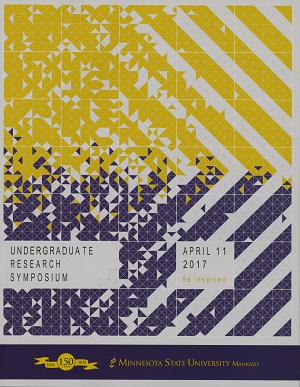History and Revitalization of the Hawaiian Language
Location
CSU 202
Start Date
11-4-2017 11:05 AM
End Date
11-4-2017 12:05 PM
Student's Major
Anthropology
Student's College
Social and Behavioral Sciences
Mentor's Name
Chelsea Mead
Mentor's Department
Anthropology
Mentor's College
Social and Behavioral Sciences
Description
Of the several thousand languages known around the world today, it is estimated that fifty percent or more will become extinct within the next century. Many of the world's unique languages are in danger of dying out unless drastic steps are taken to begin increasing the number of native speakers, but many of these languages continue to decline despite revitalization efforts. The Hawaiian language is an exception to this. The goal of this research was to trace the causes of the decline of the Hawaiian language and its subsequent revitalization. Originating on the Hawaiian Islands in the Pacific, the Hawaiian language was the dominant language of the native people until the encroach of European missionaries and settlers from the 1800s on caused a drastic decline in the use of the language by native speakers through the control of education, laws, and prejudices. However, beginning in the late twentieth century, revitalization efforts began to increase the number of both native and secondary speakers through elementary and university education programs, laws, Hawaiian-language radio shows, and other endeavors by native Hawaiian speakers. Thanks to their efforts, Hawaiian is one of the few endangered languages that has shown successful revitalization efforts, though the language isn't out of the woods yet.
History and Revitalization of the Hawaiian Language
CSU 202
Of the several thousand languages known around the world today, it is estimated that fifty percent or more will become extinct within the next century. Many of the world's unique languages are in danger of dying out unless drastic steps are taken to begin increasing the number of native speakers, but many of these languages continue to decline despite revitalization efforts. The Hawaiian language is an exception to this. The goal of this research was to trace the causes of the decline of the Hawaiian language and its subsequent revitalization. Originating on the Hawaiian Islands in the Pacific, the Hawaiian language was the dominant language of the native people until the encroach of European missionaries and settlers from the 1800s on caused a drastic decline in the use of the language by native speakers through the control of education, laws, and prejudices. However, beginning in the late twentieth century, revitalization efforts began to increase the number of both native and secondary speakers through elementary and university education programs, laws, Hawaiian-language radio shows, and other endeavors by native Hawaiian speakers. Thanks to their efforts, Hawaiian is one of the few endangered languages that has shown successful revitalization efforts, though the language isn't out of the woods yet.
Recommended Citation
Bruce, Shannon. "History and Revitalization of the Hawaiian Language." Undergraduate Research Symposium, Mankato, MN, April 11, 2017.
https://cornerstone.lib.mnsu.edu/urs/2017/oral-session-07/2



